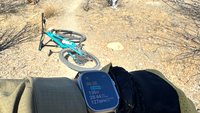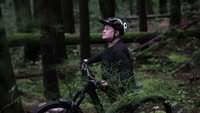Disagree. A sustainable trail is one that does not cause erosion, and does not require excessive maintenance.
Trails that are way out in the sticks, covered in snow 9 months of the year, and require an hour plus climb will never see large traffic. Rake and rides are sustainable in this case.
Car analogy:
gravel road is sustainable for a driveway.
cobblestone road is sustainable for a quiet village road.
modern road building techniques are needed for a freeway.
Gravel road will not work for a freeway, just as a massive concrete road is not needed for a driveway.
If the amount a traffic a trail gets does not surpass the forests ability to regenerate duff and humus, a fresh and natty trail will stay fresh and natty.
Once you start breaking down the small salal roots and moss, that hold together the top humus layer, and the trail starts getting down to mineral, water no longer sheets slowly. It stays on the trail tread, taking path of least resistance, taking the soil with it, eventually turning the trail into a creek.











